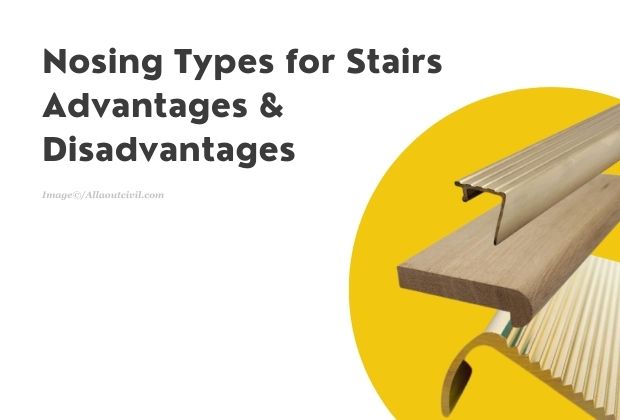What is Stair Nosing?
Stair nosing is an extra strip provided on the edge of stairs. The main purpose of stair nosing is to enhance safety by providing a visible, slip-resistant, and durable edge to the stairs. Stair nosings are also called stair nose trim.

Stairs edges can be covered with different nosing types to enhance aesthetic appearance, which helps protect from wear and tear and extends the lifespan of the staircase.
Also Read – What is skirting? 6 Types of skirting boards
Advantages of Stair Nosing
1. Safety Enhancement: Stair nosing provides a visible edge to the stairs, reducing the risk of accidents, especially in areas with low visibility or poor lighting.
2. Slip Resistance: Stair nosing has a slip-resistant surface, offering additional traction and minimizing the chances of slipping and falling on the stairs.
3. Durability: Stair nosing protects the edges of the stairs from regular foot traffic, preventing wear and tear and extending the overall lifespan of the staircase.
4. Aesthetic Appearance: Stair nosing comes with a wide range of materials, colors, and designs, enhancing the overall aesthetic of the staircase and the surrounding area.
5. Code Compliance: In many commercial and public buildings, As per code and regulations stair nosing is a requirement for safety compliance.
Disadvantages of Stair Nosing
1. Cost: Installing stair nosing can be expensive, especially if high-quality materials are used. It depends on the nosing types.
2. Installation Complexity: Skilled labor and specialized tools are required for installing stair nosing. It varies based on the nosing types and the staircase design.
3. Maintenance: Stair nosing requires regular maitance and Cleaning and inspecting for wear and tear are essential, to keep it durable.
Also Read – Pointing in construction – Types | Methods | Advantages
What is Stair Nosing Used for?
Well, Stair nosing can be used in many places to provide safety and enhance the aesthetics of the staircase. The following uses clear the question of what is stair nosing used for:
1. Commercial Buildings: Stair nosing is commonly used in commercial buildings such as offices, shopping malls, and airports to enhance safety and comply with building codes.
2. Residential Buildings: These are also used in residential stairs to provide safety for kids and other family members, they also protect the edges of stairs, especially in high-traffic areas.
3. Educational Institutions: Educational institutes like Schools and universities often use stair nosing to provide a safer environment for students and staff.
4. Public Infrastructure: Stair nosing is widely used in public areas like bus terminals, train stations, and museums to provide safety for the public.
Also Read – False Ceiling – Types | Advantages | Disadvantages
Stair Nosing Types for Staircase Based on Material
Nosing types for staircases can be divided based on the material and appearance. The following nosing types are based on the type of materials.
1. Vinyl Stair Nosing
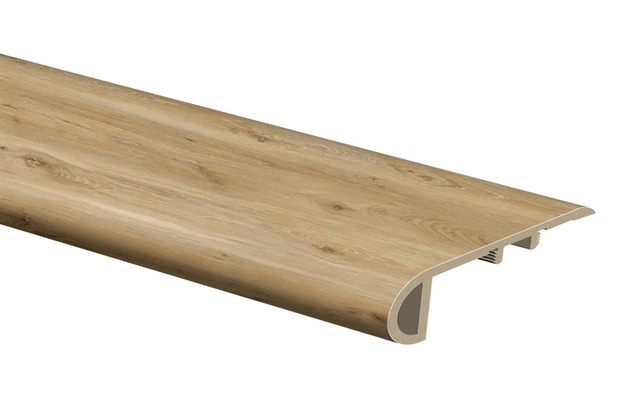
Vinyl stair nosing comes with various options in designs and it is cost effective. It provides good slip resistance which enhances the safety in high-traffic areas.
2. Rubber Stair Nosing
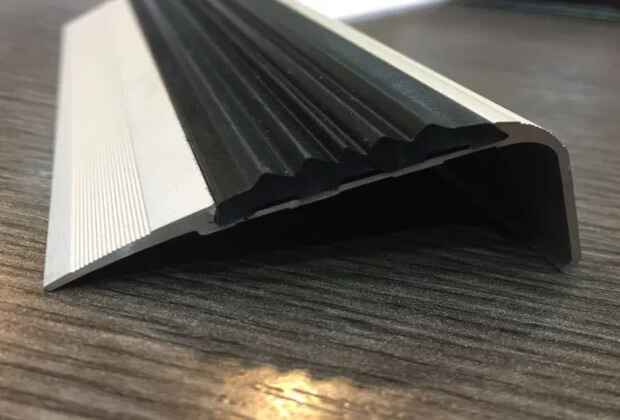
Rubber stair nosing offers various features such as slip resistance, durability, and shock absorption properties.
3. Metal Stair Nosing
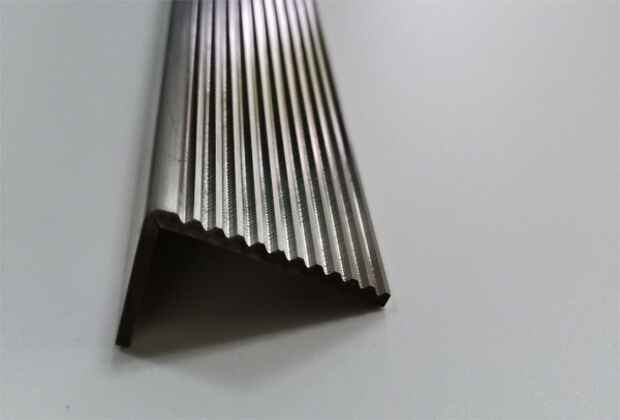
Metal stair nosing offers durability and a sleek appearance. These are usually made from aluminum or stainless steel materials.
4. Wooden Stair Nosing
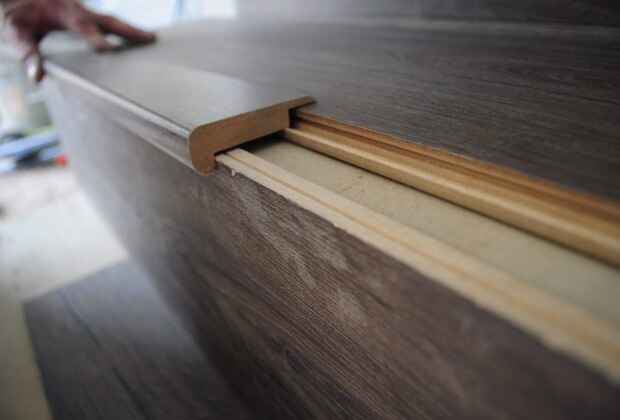
Wooden stair nosing is commonly used in residential staircases, they offer a natural and aesthetic look.
5. Fiberglass Stair Nosing
Fiber stair noses are commonly used for outdoor staircases, as they offer high durability with corrosion resistance properties.
6. Concrete Stair Nosing
Concrete stair nosing is a cost-effective nosing type commonly used for outdoor stairs, providing a durable and long-lasting solution.
Also Read – Floor Joist – Types | Span Chart | Standard Sizes | Spacings | Advantages
Stair Nosing Types for Staircase Based on Shapes
To increase the look and aesthetic of the staircase, its edges are covered with different nosing types with different shapes.
Following are the nosing types based on shapes:
- No Overhang Stair Nosing
- Square Stair Nosing
- Pencil Round Nosing
- Half-Round Stair Nosing
- Full-Round Stair Nosing

1. No Overhang Stair Nosing
No overhang stair-nosing is designed to be level with the stair tread surface, without any overhang like other nosing types. These are aslo known as flush nosing.
No overhang nosing type has many features, which are as follows
- It gives a sleek finish look.
- Provides a single-unit appearance without any extended parts.
- These nosing types give a contemporary and minimalist look.
2. Square Stair Nosing
Square stair nosing is not exactly square but has some rounded edges. This type of nosing prevents dents and scratches.
Square stair nosing offers the following features:
- They give clean lines and a modern aesthetic look.
- Offers a clean and defined look on the staircase.
- Suitable for contemporary and industrial designs.
3. Pencil Round Nosing
As the name says this kind of stair nosing type looks like pencils. They have rounded edges without any sharp corners and with a flat face.
Pencil stair nosing features:
- Rounded corners without any sharp edges
- Suitable for both modern and traditional staircases.
- Clean and flat surface.
- Best for safety, in more children spaces.
4. Half Round Stair Nosing
They have semi-circular or rounded corners which resemble to half of a cylinder. Half-round stair nosing offers a smooth and rounded transition from the tread to the riser. This type of nosing is also called “bull nose” stair nosing.
Half-round stair nosing features:
- Commonly used in residential.
- It gives a traditional and aesthetic appearance to the staircase.
5. Full Round Stair Nosing
Full round stair nosing is completely rounded and offers continuous curves along the stair edges.
Full rounded stair nosing features:
- Only used for certain designed staircases.
- Poor slip resistance.
- Offers a smooth look and feel.
Also Read – Stained Concrete Floors – Types, Procedure, Advantages, and Disadvantages
FAQs on Stair Nosing Types
Stair nosing is an extra strip provided on the edge of stairs. The main purpose of stair nosing is to enhance safety by providing a visible, slip-resistant, and durable edge to the stairs
Based on the shape, 5 Stair nosing types are there which are as follows:
1. No Overhang Stair Nosing
2. Square Stair Nosing
3. Pencil Round Nosing
4. Half-Round Stair Nosing
5. Full-Round Stair Nosing

